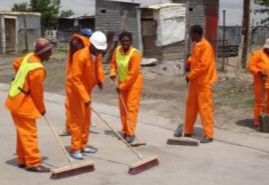Today, more than 3.5 billion working adults each spend roughly 90 000 hours – or about 45 years – of their lives at work. As Corporate Wellness Week (1–5 July) approaches, focus is shifting to the rising tide of workplace burnout in South Africa. The South African Depression and Anxiety Group (SADAG) estimates that as many as one in three employees in the country are affected by burnout, a condition linked to ongoing, unmanaged stress.
Burnout is more than just feeling overworked – it’s a state of emotional, physical and mental exhaustion brought on by prolonged stress. It can stem from workplace pressure or personal stress such as a major illness or family problems. Left unchecked, burnout can lead to a host of health issues, including disrupted sleep patterns, cognitive impairments and a higher risk depression.
Nicole Jennings, spokesperson for Pharma Dynamics says burnout doesn’t happen overnight – it’s the result of stress that builds up over time, often ignored until it becomes unmanageable. “It’s often disguised as productivity – people push harder, skip breaks, sacrifice sleep – all in the name of performance, until their health eventually begins to unravel.”
Who’s most at risk
While burnout can affect workers across the board, those in high-stress environments, such as healthcare and emergency services, are particularly vulnerable. These professions demand long hours, carry heavy emotional loads and often allow for little time for recovery.
Earlier this year (2025), a global survey involving over 30 000 employees conducted by the McKinsey Health Institute, in collaboration with the World Economic Forum, revealed that women, members of the LGBTQI+ community, younger people, neurodivergent people and those facing financial challenges, reported significantly worse health outcomes at work.
In South Africa, these risks are magnified by tough economic conditions, including high unemployment, loadshedding and poor service delivery, which are creating an environment where stress can tip into burnout.
“Many in their 20s and 30s, in particular, entered adulthood during a time of global uncertainty,” Jennings said. “They’re juggling financial strain, disrupted education or career starts, and social isolation due to the difficulty forming social connections in today’s hyper-digital world – aJerryJerryll adding to the mental load.”
According to a recent report by the American Psychological Association, younger adults are significantly more likely than older generations to feel overwhelmed, isolated and unable to function effectively due to stress. Financial concerns are a major contributor, with nearly 70% of 18–44-year-olds saying they feel consumed by money worries.
What can be done
While technology has revolutionised the workplace, it has also blurred the boundaries between work and personal life. The constant connectivity facilitated by smartphones and laptops means many employees find it challenging to disconnect, leading to prolonged exposure to work-related stressors. This “always-on” culture contributes significantly to burnout.
Jennings says addressing burnout requires a multifaceted approach:
• Set boundaries: Establish clear work-life boundaries. Avoid checking work emails or messages outside of designated work hours.
• Digital detox: Allocate specific times during the day to unplug from digital devices. Engage in activities that don’t involve screens, such as reading or outdoor walks.
• Seek support: Open up to friends, family or professionals about feelings of stress or burnout. Sharing experiences can provide relief and guidance.
• Healthy lifestyle: Maintain a balanced diet, regular exercise routine and adequate sleep. These foundational health practices can bolster resilience against stress.
• Mindfulness and relaxation: Incorporate mindfulness practices, such as meditation or deep-breathing exercises, to manage stress levels effectively.
Employers also play a crucial role in mitigating burnout. By fostering a supportive work environment, promoting regular breaks and recognising employee achievements, organisations can help reduce the risk of burnout among their staff.
The business case
The McKinsey research also showed that organisations investing in employee health often experience increased productivity, reduced absenteeism, lower healthcare costs, and improved employee engagement and retention. Such efforts demonstrate that fostering a healthier workforce can lead to substantial economic returns too.
“Burnout may be invisible at first, but its impact is deeply felt – in our homes, relationships and workplaces,” says Jennings. “We need to shift the narrative from glorifying overwork to valuing mental resilience. Corporate Wellness Week isn’t just another awareness day – it’s a chance for each of us, whether employer or employee, to press pause, take stock and work towards a healthier work-life balance. Let this be the moment we commit to lasting change, not just for ourselves, but for the generations coming after us.
Pharma Dynamics
Soweto Sunrise News
































